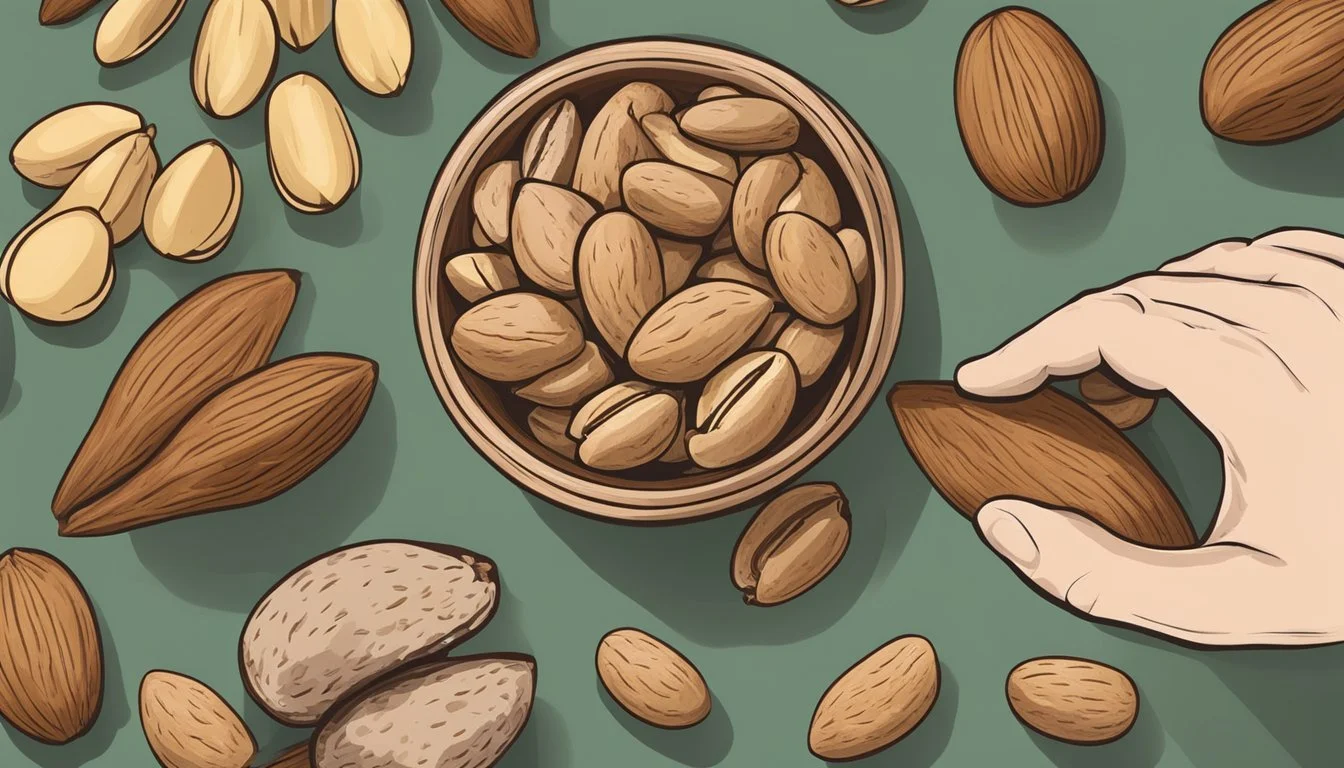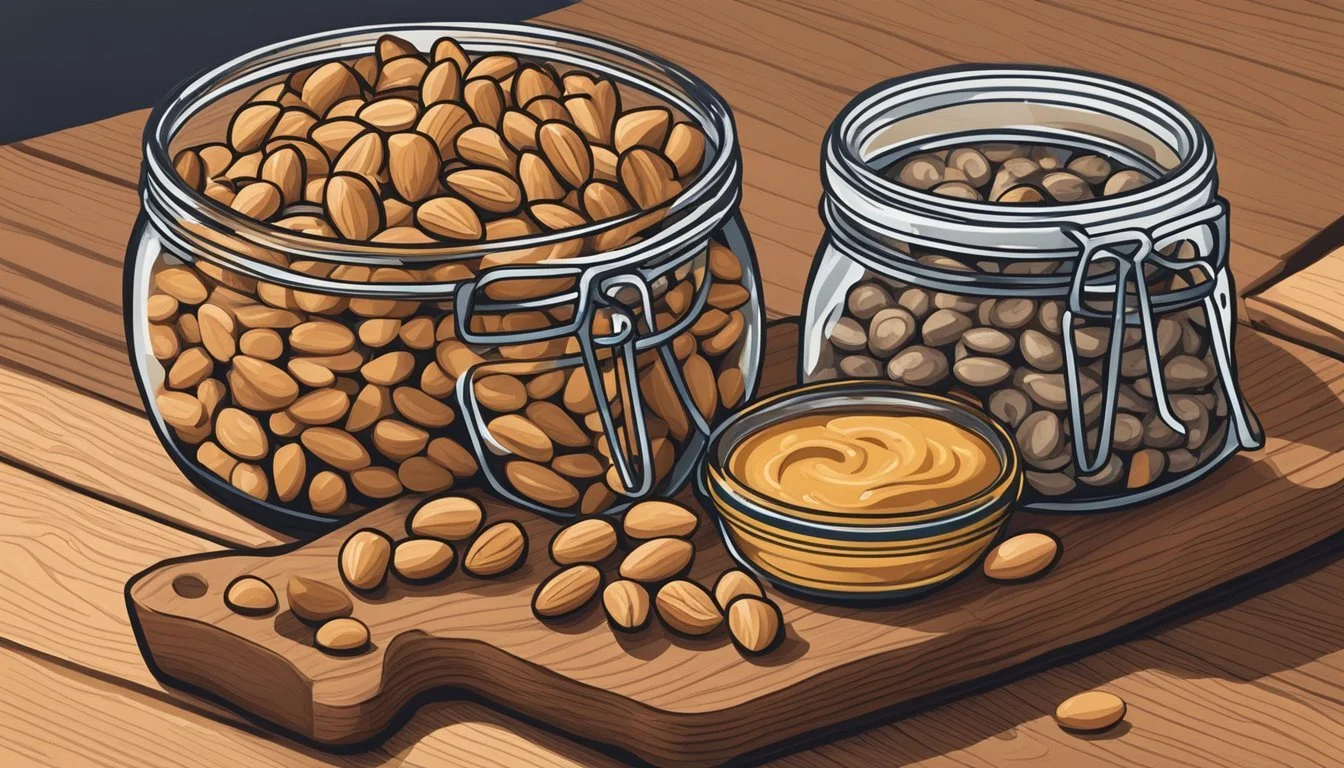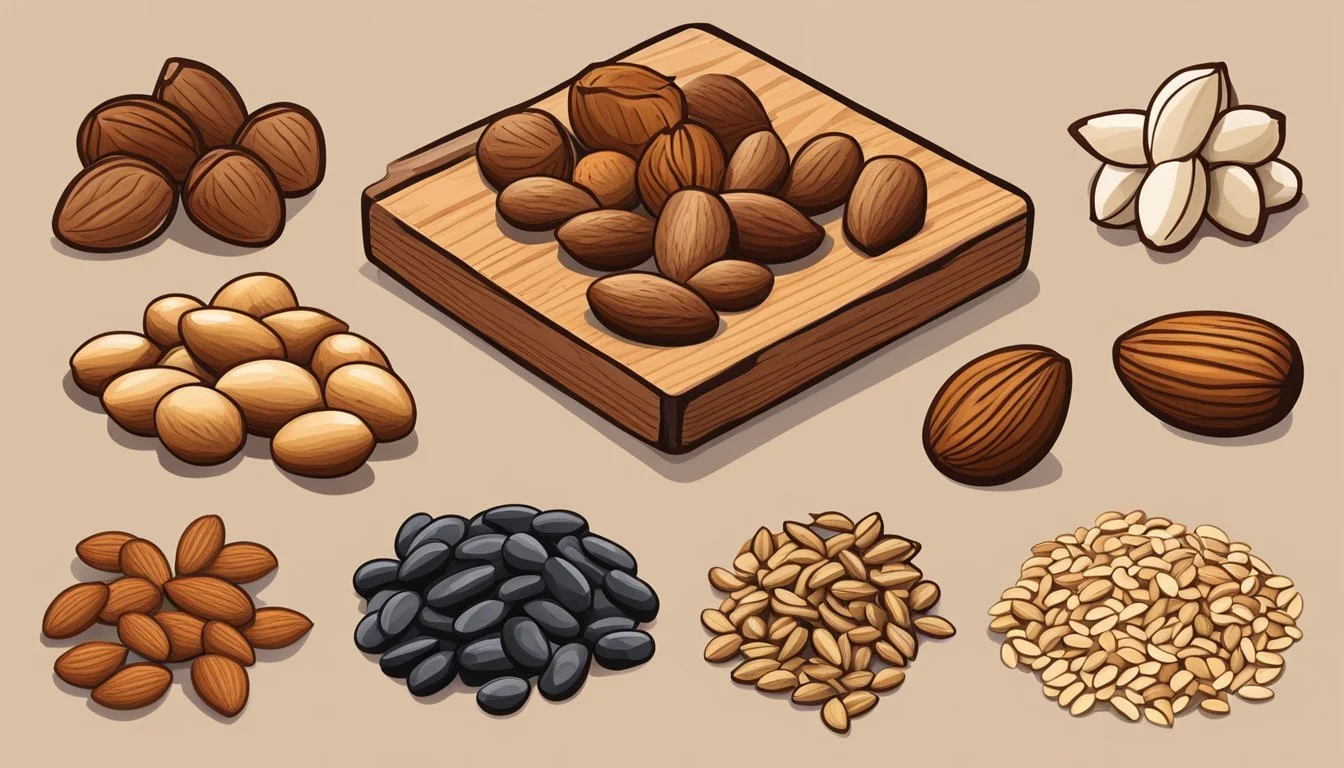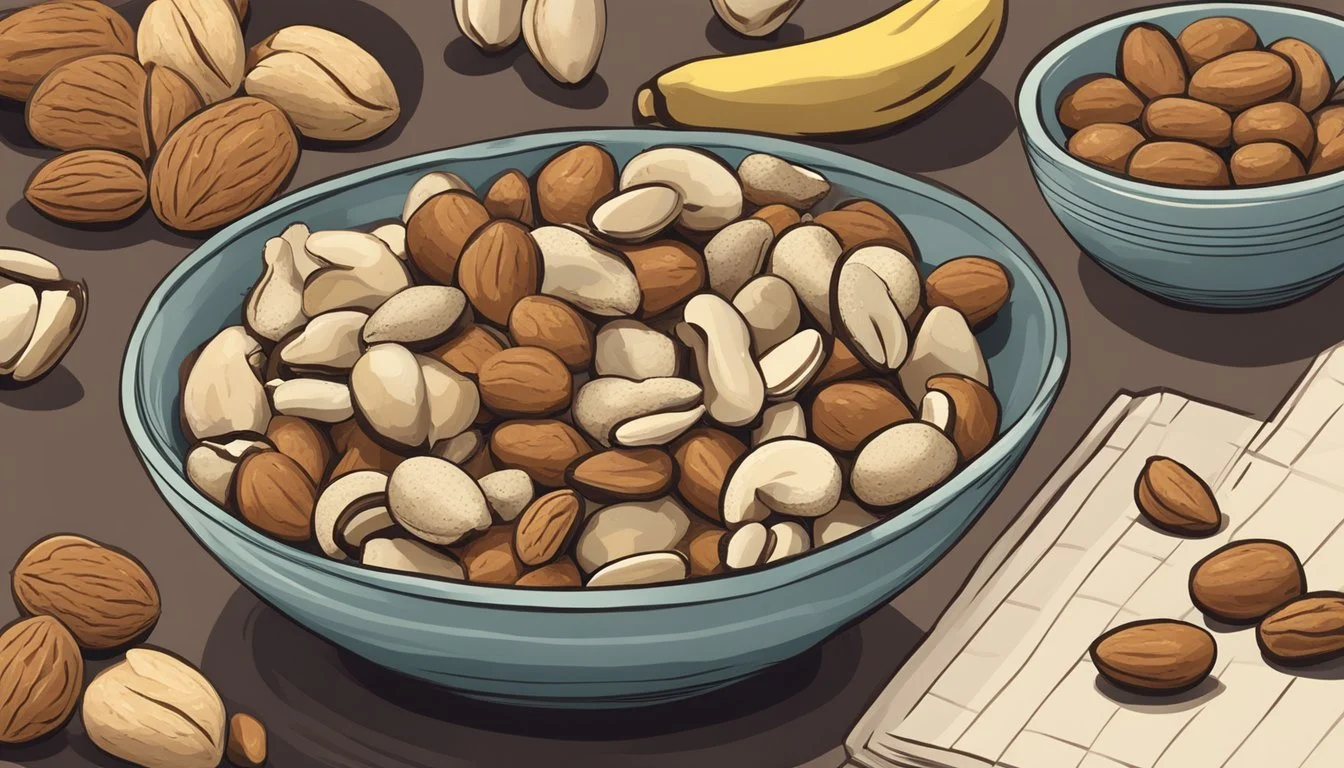Brazil Nut Substitutes
Top Alternatives for Allergy-Friendly Cooking
Brazil nuts are known for their unique creamy texture and rich, earthy flavor, making them a favored ingredient in a variety of dishes, from baked goods to salads. However, due to factors like allergies, availability, or personal preference, a substitute may be necessary. Finding alternatives that match the distinctive qualities of Brazil nuts is important for maintaining the integrity of the recipe, particularly in terms of taste and nutritional value.
Several nuts possess qualities that make them suitable as Brazil nut substitutes. Pili nuts, for instance, bring a similar buttery taste and can be used in equal amounts as a replacement. Macadamia nuts, with their comparable richness and subtle sweetness, can also stand in for Brazil nuts, especially in sweet dishes and baked goods. While there is a slight difference in texture and flavor, these substitutes can provide a similar mouthfeel and a complementary nutty taste.
For those dealing with Brazil nut allergies, selecting an alternative becomes a matter of safety in addition to flavor and texture. In such cases, it is crucial to choose substitutes that do not trigger allergic reactions while closely mimicking the nutritional profile of Brazil nuts, which are known for their selenium content. Alternatives like cashews and English walnuts are often recommended, providing their own unique health benefits along with a pleasing taste and texture that adapt well to various recipes.
Understanding Brazil Nuts
Brazil nuts are a nutritious delicacy harvested from the Amazon. They are known for their high selenium content and their potential health benefits.
Nutritional Profile and Health Benefits
Brazil nuts are one of the richest dietary sources of selenium, a vital mineral for antioxidant functions and thyroid health. A single Brazil nut can contain more than the daily recommended amount of selenium. They are notable for their content of polyunsaturated fats and omega-3 fatty acids, which are beneficial for heart health. Brazil nuts also provide fiber, which supports digestive health.
Key Nutrients:
Selenium: Crucial for antioxidant activities and thyroid function
Omega-3 Fatty Acids: Support heart health and reduce inflammation
Fiber: Aids in digestive health
Culinary Uses
Due to their rich, creamy texture, Brazil nuts are often used in baking and as snacks. They can be chopped and added to batters for muffins and cakes, or sprinkled atop salads, blending seamlessly with sweet and savory dishes alike.
Risks and Allergies
Consuming Brazil nuts carries risks, including allergies and selenosis, a condition caused by excessive selenium intake which can lead to symptoms like gastrointestinal upsets, fatigue, and hair loss. They should be consumed in moderation due to their high selenium content. Brazil nuts are also susceptible to toxicity caused by the presence of aflatoxins, which are produced by certain molds, so it's essential to store them properly. People with nut allergies should avoid them as they can provoke severe allergic reactions.
Brazil Nut Substitutes for Recipes
When altering recipes that call for Brazil nuts, one's primary goal is to achieve a similar texture and flavor profile, while maintaining the recipe's integrity in both taste and presentation.
Nuts and Seeds as Substitutes
Pili Nuts: These offer a creamy and buttery taste ideal for baking and can be used in a 1:1 ratio as a Brazil nut alternative.
English Walnuts: With a milder flavor, they are a suitable substitute in most recipes, including bread and cookies.
Cashews: Their creamy texture and sweetness work well in both savory dishes like pesto and desserts.
Pecans: Pecans provide a richer taste and can be used similarly to walnuts in recipes such as chocolate chip cookies and nut breads.
Pumpkin/Sunflower Seeds: For those looking for a nut-free option, these seeds offer a crunchy texture ideal for muffins and granola.
Nut/Seed Substitute Use in Ratio to Brazil Nuts Texture Flavor Profile Pili Nuts Baking 1:1 Creamy Buttery English Walnuts Bread, Cookies 1:1 Crunchy Mildly Bitter Cashews Pesto, Sauces, Desserts 1:1 Soft Mildly Sweet Pecans Cookies, Quick Bread 1:1 Crunchy Rich, Savory
Non-Nut Alternatives
Many recipes can accommodate substitutes that are not nuts, such as seeds or crisped rice. These options provide alternate textures and flavors while maintaining the structure of the recipe, especially in nut-free environments.
Crisped Rice Cereal: This can mimic the crunch of nuts in brittle or chocolate bars. Begin with half the quantity of nuts and adjust to preference.
Roasted Pumpkin/Sunflower Seeds: They can brilliantly replace nuts, offering a similar bite in muffins or savory dishes.
Creating Nut-Free Flavors
When nut allergies are a concern, creating nut-free flavors in recipes becomes paramount.
One can introduce nut butter alternatives, like sunflower seed butter or soynut butter, to mimic a creamy nut flavor in sauces or fillings.
For texture, consider using oats or a mix of seeds in place of nuts to add substance to granola or as toppings on desserts.
Inclusion of chocolate chips or dried fruit can also enrich recipes with layers of flavor, compensating for the absence of nuts.
Nut and Seed Substitutes
Substituting Brazil nuts in recipes requires understanding the texture and flavor profiles of various nuts and seeds. The following alternatives provide a range of options, each imparting unique nutritional benefits and culinary characteristics.
Almonds and Almond Products
Almonds, known for their versatility, are a low-calorie substitute with a rich content of fiber and protein. Almond butter's creaminess makes it an ideal swap for Brazil nuts in sauces and spreads.
Cashews and Cashew-Based Ingredients
Cashews offer a creamy texture and a mild, sweet flavor, making them suitable for replicating the mouthfeel of Brazil nuts. Cashew-based ingredients can also provide a buttery note in vegan recipes.
Pecans and Pecan Varieties
Pecans, with their buttery quality and similar crunch, act as a suitable Brazil nut alternative. They are rich in antioxidants and work well in baked goods.
Walnuts and Walnut Options
Walnuts contain a slightly bitter taste with a crunchy texture, making them a practical choice for replacing Brazil nuts. They contribute beneficial minerals and a comparable nutritional profile.
Pistachios and Their Uses
Pistachios, slightly sweet and earthy, can be incorporated for their unique green hue and distinctive flavor. They are lower in calories compared to other nuts and rich in antioxidants.
Hazelnuts and Hazelnut Alternatives
Hazelnuts offer a pronounced nutty taste with a high concentration of fiber and protein. Hazelnut butter can mimic the creaminess and butteriness of Brazil nuts.
Macadamia Nuts and Macadamia Options
Macadamia nuts, known for their rich, buttery taste, provide creaminess that closely resembles Brazil nuts. They can often be used on a one-to-one basis in recipes requiring a similar texture.
Pumpkin Seeds and Pumpkin Seed Products
Pumpkin seeds are a nutritious seed alternative low in calories and high in minerals like magnesium. They impart a crunchy texture to dishes and work well in pesto or as a garnish.
Sunflower Seeds and Sunflower-Based Mixes
Sunflower seeds, with their mild, nutty taste, are a popular substitute for those with nut allergies. Sunflower seed butter can be used to achieve a creamy consistency akin to nut butters.
Non-Nut Alternatives for Specific Needs
When catering to dietary restrictions or seeking a nut-free version of recipes that typically include Brazil nuts, there are various options available. These alternatives utilize ingredients from soy products to grains and dairy, ensuring nobody misses out on flavor or texture.
Soy and Soy Products
Soy serves as a versatile alternative offering both flavor and protein. Roasted soybeans can mimic the crunch of nuts, while tahini, a paste made from sesame seeds, and soy nut butter provide rich, creamy consistencies similar to nut butters.
Technique: Incorporate soybeans into granola or snack mixes.
Labels: Look for products labeled as non-GMO if that's a concern.
Grains and Legume Options
Legumes and grains provide nut-free alternatives rich in texture and nutrients. One can use roasted chickpeas or peas as a direct replacement for nuts in salads and snack mixes. Pretzels or sunflower seeds serve well in baked goods where a crunch is desired.
Peas and Chickpeas: An excellent protein-rich snack.
Grains: Use crushed pretzels for a salty crunch in cookies or bars.
Dairy-Based Substitutes
For those without dairy restrictions, cheese offers a richness that can replace the creamy texture of Brazil nuts. Grated or shredded cheese can be used in savory dishes, while milk and eggs boost moisture in baked goods.
Milk: A universal dairy product to enhance creaminess.
Eggs: Binding agent in recipes, providing structure and moisture.
Other Unique Alternatives
Pumpkin seed butter and sunflower butter are great nut-free options that still pack a creamy punch. Chia and flax seeds can be used to create texture and are high in omega-3 fatty acids, ideal for nutritional boosts in smoothies and yogurts.
Chia and Flax: Use to add a nutty flavor to bread or as egg substitutes.
Seed Butters: Spread on toast or stir into oatmeal for added richness.
Practical Tips for Substituting Brazil Nuts
When replacing Brazil nuts in recipes, it’s essential to consider measurement and ratio, texture and consistency, storage and shelf life, as well as recipe adjustments to maintain the integrity of the dish.
Measurement and Ratios
When substituting Brazil nuts, use an equal amount of the chosen alternative. For example, if a recipe calls for 1 cup of Brazil nuts, replace with 1 cup of pili nuts, English walnuts, cashews, or macadamia nuts. Precise measurement ensures that the balance of flavors and ingredients remains consistent.
1 cup Brazil nuts = 1 cup substitute
Texture and Consistency Considerations
The texture and consistency of the substitute nut play a critical role in both cooking and baking. Consider these qualities:
Pili Nuts: Creamy, buttery flavor with a rich texture, suitable for dishes requiring smooth consistency.
English Walnuts: Mild, slightly bitter taste with a crunchy texture, best for a robust addition to recipes.
Cashews: Soft texture and mildly sweet, perfect for creamy sauces or desserts.
Macadamia Nuts: Offer a buttery and creamy texture similar to Brazil nuts, especially good in baked goods.
Choose based on the desired outcome of your dish, whether it's a crunch in salads or a creaminess in baked treats.
Storage and Shelf Life
Substitutes for Brazil nuts have varied storage requirements:
In the refrigerator: Most nuts stay fresh longer when refrigerated, particularly in airtight containers to preserve their oils and prevent them from becoming rancid.
In the freezer: For extended shelf life, nuts can be frozen and retain their quality for several months.
Always label containers with the date of storage to keep track of freshness.
Adjusting Recipes for Substitutes
When using substitutes in recipes, minor adjustments might be necessary. If the substitute is saltier or sweeter, reduce or increase the amount of added salt or sugar accordingly. Additionally, the oil content of nuts can vary; a nut with higher oil content might require a slight decrease in any added fats to the recipe. Make note of serving sizes—alterations in nut type could affect the servings due to variations in nut volume and density.







